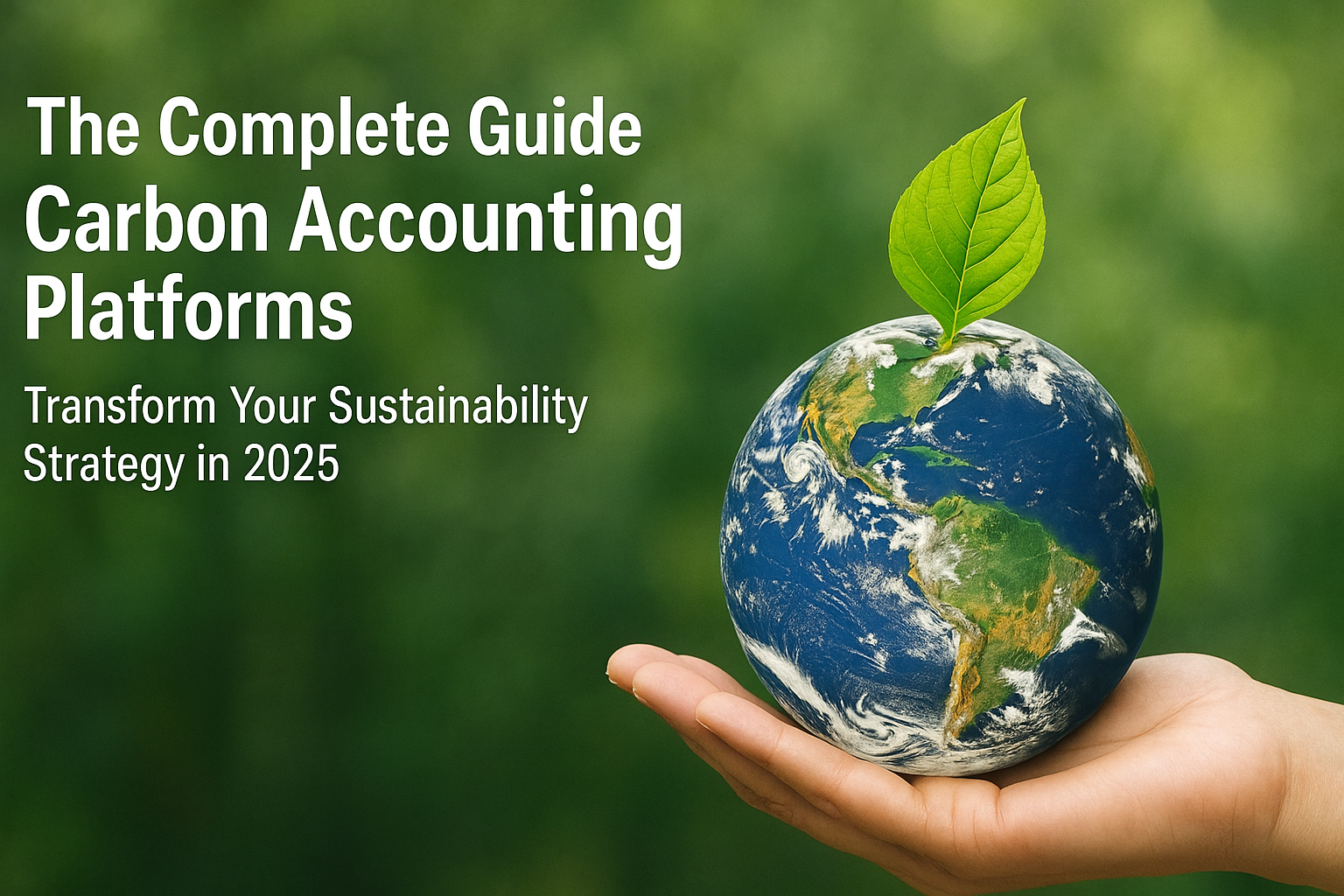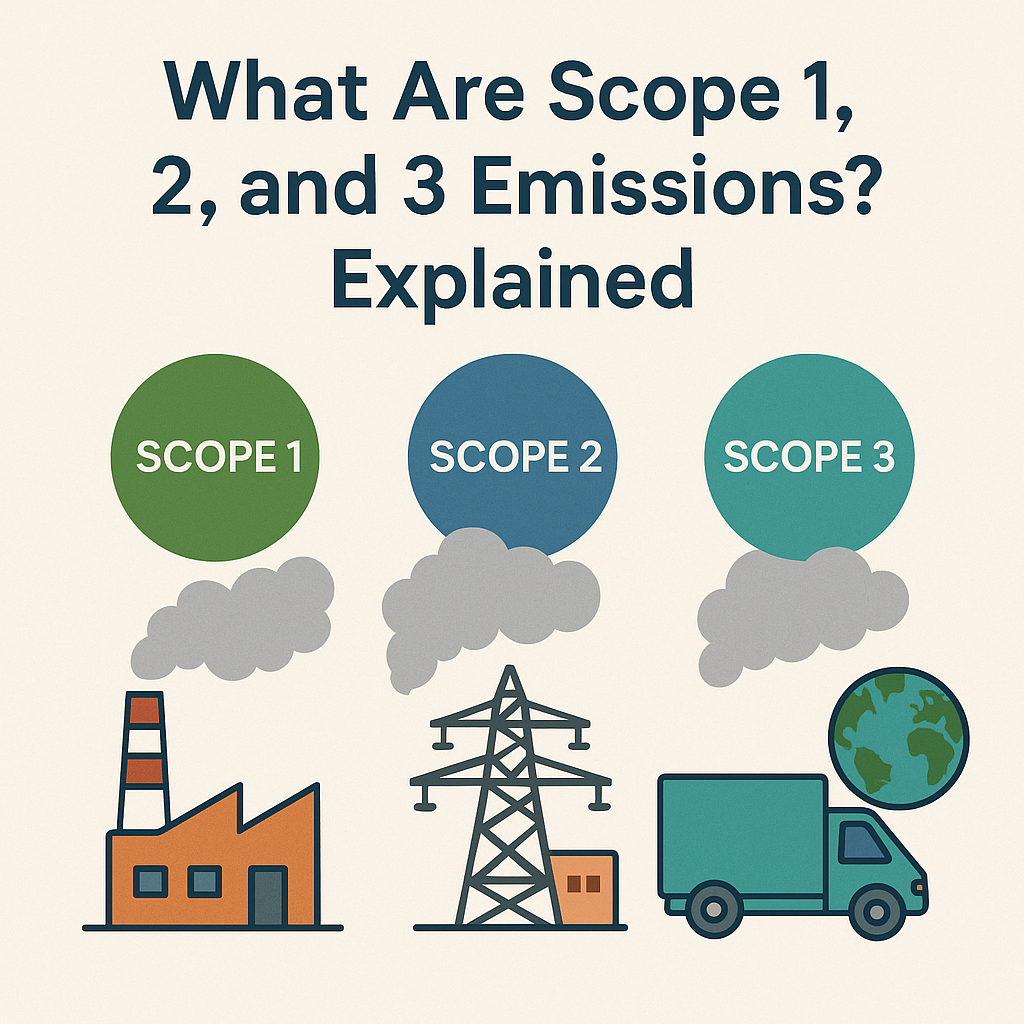When it comes to environmental pollution, emissions play a pivotal role in the damage caused to our planet. However, not all emissions are the same, and understanding their various types is essential to effectively combat climate change. Among these emissions, Scope 3 emissions hold a significant position due to their indirect nature and the challenges associated with accurately measuring them. In this article, we'll break down the key points from a 2022 article titled "Supply-chain data sharing for scope 3 emissions" by Aurel Stenzel and Israel Waichman, focusing on making the concepts more accessible and understandable.
Differentiating Between Direct and Indirect Emissions
Emissions from production processes can be classified as either direct or indirect. Direct emissions are those that are produced by the reporting entity itself, like the smokestack emissions from a factory. Indirect emissions, on the other hand, are associated with the products themselves as raw materials go through various stages in the supply chain. The GHG Corporate Protocol provides a standardised way to define these types of emissions. It labels Scope 1 emissions as direct emissions, Scope 2 emissions as those related to energy generation, and Scope 3 emissions as all other indirect emissions along the supply chain.
Understanding Scope 3 Emissions
Scope 3 emissions are quite complex. They encompass all the emissions tied to the supply chain, including those from purchased goods, transportation, waste, employee commuting, and more. Surprisingly, these Scope 3 emissions make up a substantial portion of a company's total carbon footprint, averaging around 84%. This means that the impact of these indirect emissions on the environment is enormous, highlighting their importance in sustainability efforts.

The Importance of Accurate Reporting
Accurately measuring Scope 3 emissions is crucial for several reasons. It helps companies understand their environmental impact better, identifies areas where pollution can be reduced, and enhances transparency and accountability. Interestingly, while measuring and reporting Scope 1 and Scope 2 emissions are required, reporting Scope 3 emissions remains optional. However, this presents a problem as Scope 3 emissions constitute a significant majority of a company's carbon footprint, making up about 84% on average. In some industries, this number can be even higher. This gap in reporting is a concern as it hinders effective environmental action.
Benefits of Reporting Scope 3 Emissions
Why should companies bother with reporting Scope 3 emissions? The benefits are manifold. First, reporting these emissions increases transparency and allows companies to identify points of intervention for pollution reduction. It also fosters accountability, as firms are held responsible for their emissions. Moreover, reporting can lead to cooperative actions among companies, enhancing environmental efforts collectively. Additionally, sharing emissions data can lead to consumer pressure. When consumers are aware of the carbon footprints associated with products, they might make more sustainable choices, encouraging companies to adopt greener practices.
Benefits of Reporting Scope 3 Emissions
While the digital era has made data collection easier, sharing emissions-related data remains a challenge. Several obstacles contribute to this difficulty:
- Legal and Regulatory Challenges: Navigating the legal landscape is tough due to contractual limitations and varying data localisation measures across different countries. Ambiguous regulations and potential legal implications discourage firms from investing in emission data sharing.
- Interoperability Issues: Lack of interoperability means data measurement methods aren't standardised, and there's no consistent infrastructure for data exchange between different IT systems. This inconsistency makes creating a unified emission footprint challenging.
- Data Privacy Concerns: Privacy concerns arise when sharing detailed emission data, as it might expose sensitive information about production processes and supply networks. Companies fear this could lead to competitive disadvantages or compromise proprietary data.
Overcoming the Challenges
To tackle these challenges, collaborative efforts and innovative solutions are necessary:
- Legal and Regulatory Solutions: Governments and regulators can make Scope 3 emissions reporting mandatory, clarify regulations, and provide incentives for firms to embrace data sharing.
- Interoperability Initiatives: Initiatives like the Partnership for Carbon Transparency (PACT) aim to establish consistent methods for calculating emissions and provide technical infrastructure for data sharing.
- Data Privacy Solutions: Data trusts and advanced encryption technologies offer ways to protect data privacy while enabling effective data sharing. These solutions ensure privacy while promoting transparency and cooperation.
"To tackle these challenges, collaborative efforts and innovative solutions are necessary."
Conclusion
Scope 3 emissions are a vital aspect of a company's environmental impact, and accurate measurement hinges on overcoming challenges related to data sharing. Collaborative initiatives, standardised methods, and innovative privacy-preserving technologies are key to successful data sharing and effective emission reduction efforts. Sharing primary emission data empowers sustainable decision-making, enables optimisation, and paves the way for a greener future in the world of supply chains.
Appendix:
Frequently Asked Questions
1. What are Scope 3 emissions?
Scope 3 emissions encompass all indirect emissions within a company's value chain that are not included in Scope 2 (indirect emissions generated by the production of purchased energy).
2. Why are Scope 3 emissions important?
Scope 3 emissions constitute a significant share of many companies' carbon footprints, making them essential to include in emissions reporting and reduction efforts.
3. How much emissions occur in Scope 3?
Scope 3 emissions account for approximately 88% of greenhouse gas emissions across sectors.
4. How are Scope 3 emissions calculated?
Companies calculate Scope 3 emissions through a process known as carbon accounting.
5. Why are Scope 3 emissions difficult to calculate?
Collecting data for value chain carbon calculations can be challenging as these emissions occur outside a company's owned operations. Automated carbon accounting tools can expedite this process.
6. How do I reduce emissions in Scope 3?
To reduce Scope 3 emissions, it is crucial to first comprehensively and accurately account for them. Subsequently, businesses can initiate reduction efforts, often by engaging their suppliers in emissions reduction initiatives.
7. What is CSRD reporting, and how does it relate to Scope 3 emissions?
CSRD stands for Corporate Sustainability Reporting Directive, and it encompasses various sustainability-related reporting requirements, including Scope 3 emissions. Compliance with CSRD requirements may necessitate robust tracking and reporting of these emissions.
8. How does the GHG protocol classify Scope 3 emissions?
The Greenhouse Gas Protocol categorises Scope 3 emissions into various upstream and downstream sources, providing a detailed framework for understanding and managing these emissions.
9. What is the difference between carbon neutrality and net zero?
Carbon neutrality typically refers to balancing the emissions a company generates with emissions reductions or offsets. Net zero, on the other hand, entails achieving a balance between emissions produced and emissions removed from the atmosphere, often involving more aggressive emissions reductions.
10. How can a company work towards achieving net zero emissions in Scope 3?
Achieving net zero emissions in Scope 3 requires a multifaceted approach that involves reducing emissions across the value chain, engaging with suppliers, adopting sustainable practices, and potentially offsetting remaining emissions through reforestation or carbon removal projects.
11. What is the significance of TCFD Assessment in managing Scope 3 emissions?
The TCFD (Task Force on Climate-related Financial Disclosures) Assessment helps companies assess and disclose their climate-related risks and opportunities, including those associated with Scope 3 emissions. It provides a structured framework for understanding climate impacts on a business's operations and finances.
12. How can Supplier Questionnaires aid in addressing Scope 3 emissions?
Supplier Questionnaires can be a valuable tool for gathering essential data from suppliers to assess their emissions and sustainability practices. This information can inform emission reduction strategies and supplier engagement initiatives.
13. Can Carbon Analytics assist in managing Scope 3 emissions?
Yes, Carbon Analytics is a solution designed to streamline the tracking, measurement, and reporting of emissions, including Scope 3 emissions. This tool helps companies gain insights into their carbon footprint and identify opportunities for reduction.
14. What is Sustainability Risk Assessment, and how does it relate to Scope 3 emissions?
Sustainability Risk Assessment involves identifying and mitigating risks related to environmental and social factors, including those associated with Scope 3 emissions. It helps companies proactively manage sustainability challenges that may affect their operations and reputation.
15. How do I navigate the scope 3 categories defined by the GHG protocol?
The GHG protocol categorises Scope 3 emissions into various categories, including upstream and downstream sources. To navigate these categories effectively, companies should conduct a comprehensive assessment of their value chain and prioritise emissions reduction efforts accordingly.
16. What is the ultimate goal of Scope 3 emissions reduction efforts?
The ultimate goal of Scope 3 emissions reduction efforts is to minimise a company's indirect carbon footprint throughout its value chain, contributing to global climate goals, enhancing sustainability, and meeting stakeholder expectations for responsible environmental stewardship.
Detailed Scope 3 Emissions Categories
For a comprehensive understanding of Scope 3 emissions, refer to the Greenhouse Gas Protocol's Technical Guidance for Calculating Scope 3 Emissions, which provides a detailed breakdown of the categories. Scope 3 emissions categories are further classified into upstream and downstream emissions, each contributing to the overall carbon footprint of a company.
Upstream Emissions Scope 3 Categories:
- Purchased Goods and Services: Emissions associated with the extraction, production, and transportation of goods and services purchased or acquired by the company.
- Capital Goods: Emissions linked to the extraction, production, and transportation of capital goods purchased or acquired by the company.
- Fuel- and Energy-Related Activities: Emissions arising from the extraction, production, and transportation of fuels and energy purchased by the company, not already accounted for in Scope 1 or Scope 2.
- Upstream Transportation and Distribution: Emissions related to the transportation and distribution of products purchased by the company, including inbound logistics, outbound logistics, and transportation between company facilities.
- Waste Generated in Operations: Emissions originating from the disposal and treatment of waste generated in the company's operations, in facilities not owned or controlled by the company.
- Business Travel: Emissions associated with the transportation of employees for business-related activities in vehicles not owned or operated by the company.
- Employee Commuting: Emissions arising from the transportation of employees between their homes and their worksites in vehicles not owned or operated by the company.
- Upstream Leased Assets: Emissions resulting from the operation of assets leased by the company, not included in Scope 1 and Scope 2.
Downstream Emissions Scope 3 Categories:
- Downstream Transportation and Distribution: Emissions related to the transportation and distribution of products sold by the company between its operations and the end consumer.
- Processing of Sold Products: Emissions linked to the processing of intermediate products sold by downstream companies.
- Use of Sold Products: Emissions resulting from the end use of goods and services sold by the company.
- End-of-Life Treatment of Sold Products: Emissions associated with the waste disposal and treatment of products sold by the company at the end of their lifecycle.
- Downstream Leased Assets: Emissions resulting from the operation of assets owned by the company and leased to other entities.
- Franchises: Emissions originating from the operation of franchises in the reporting year, not included in Scope 1 and Scope 2.
- Investments: Emissions associated with the operation of investments, including equity and debt investments and project finance.



